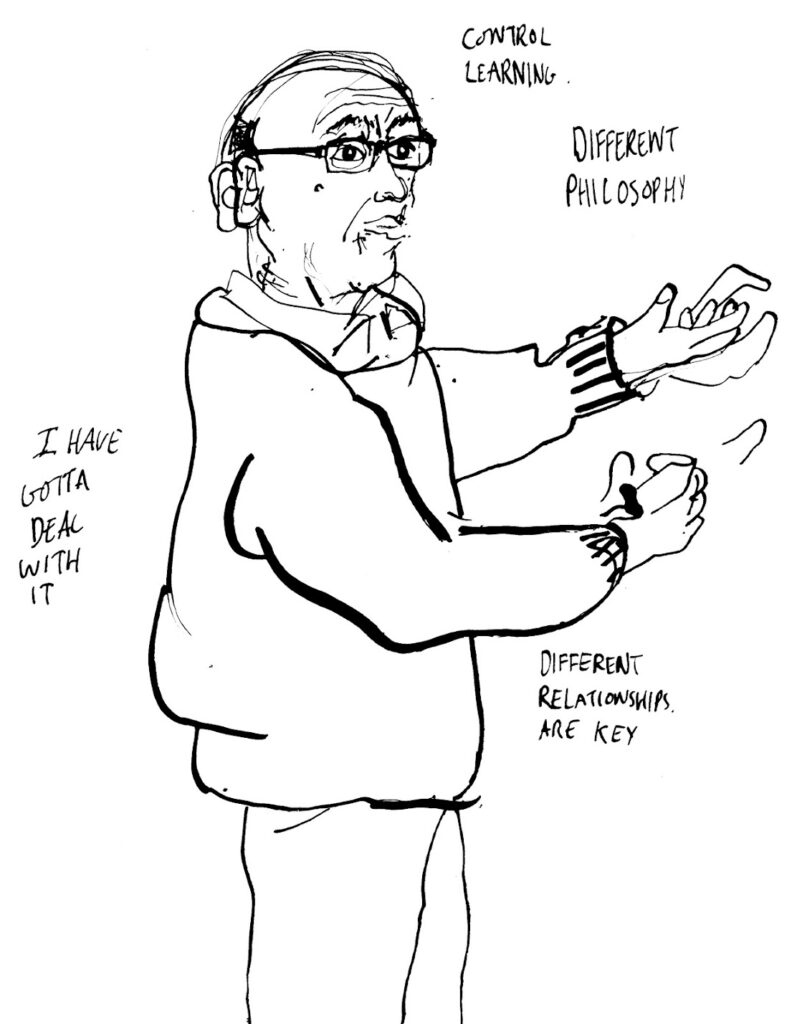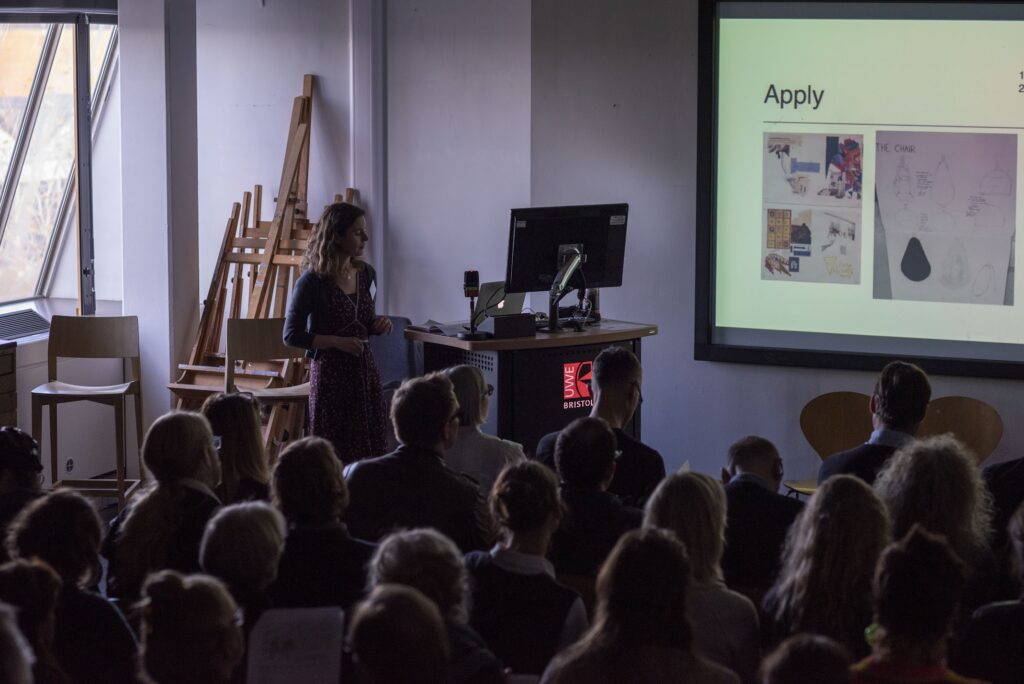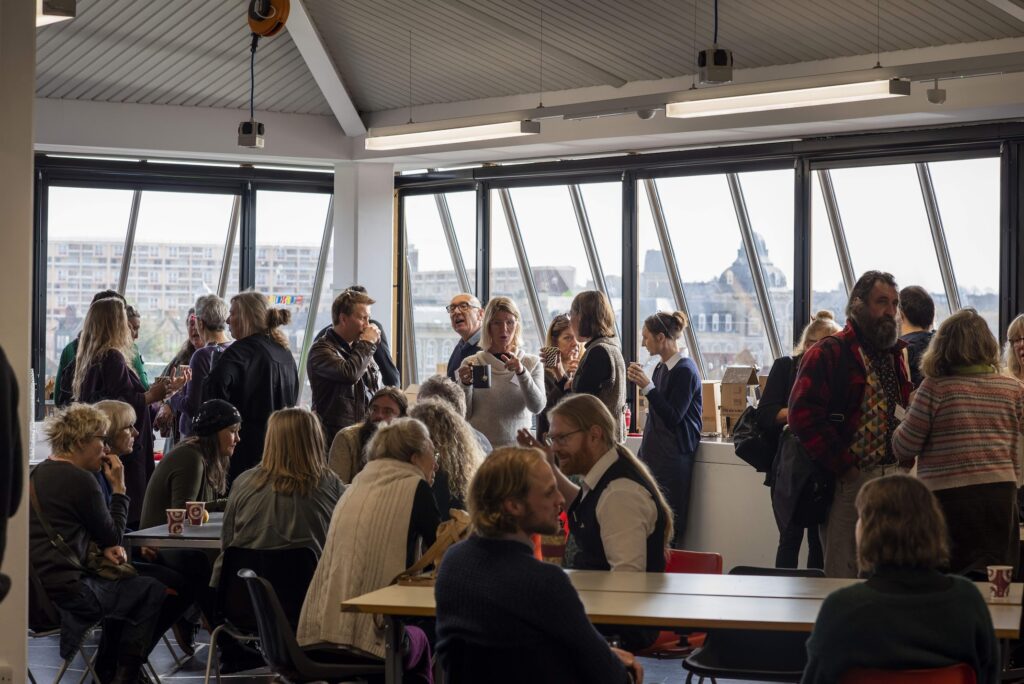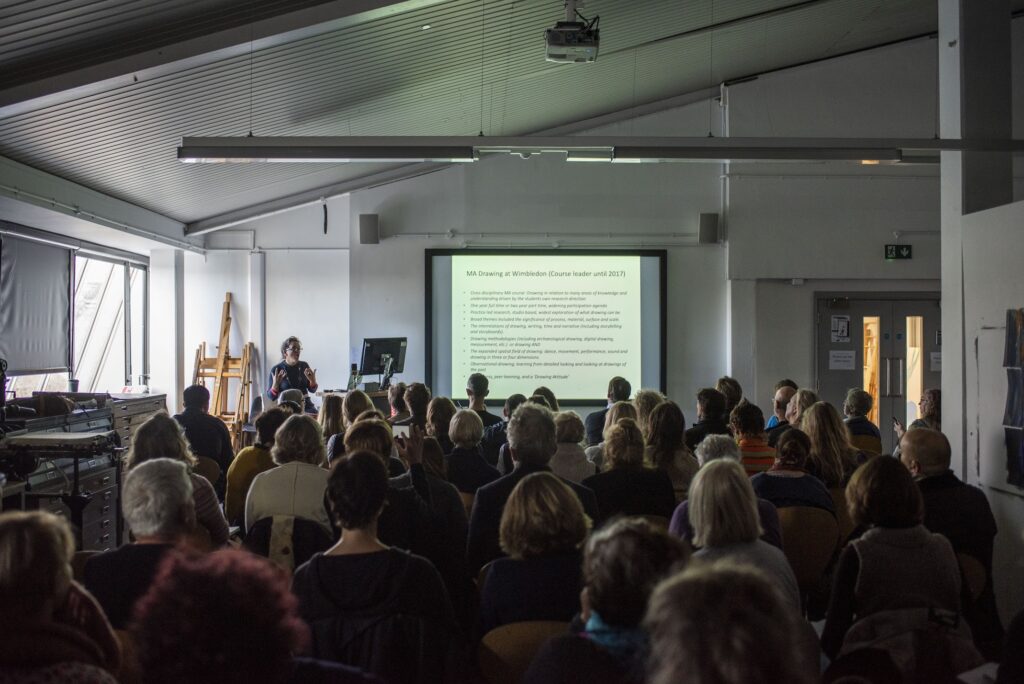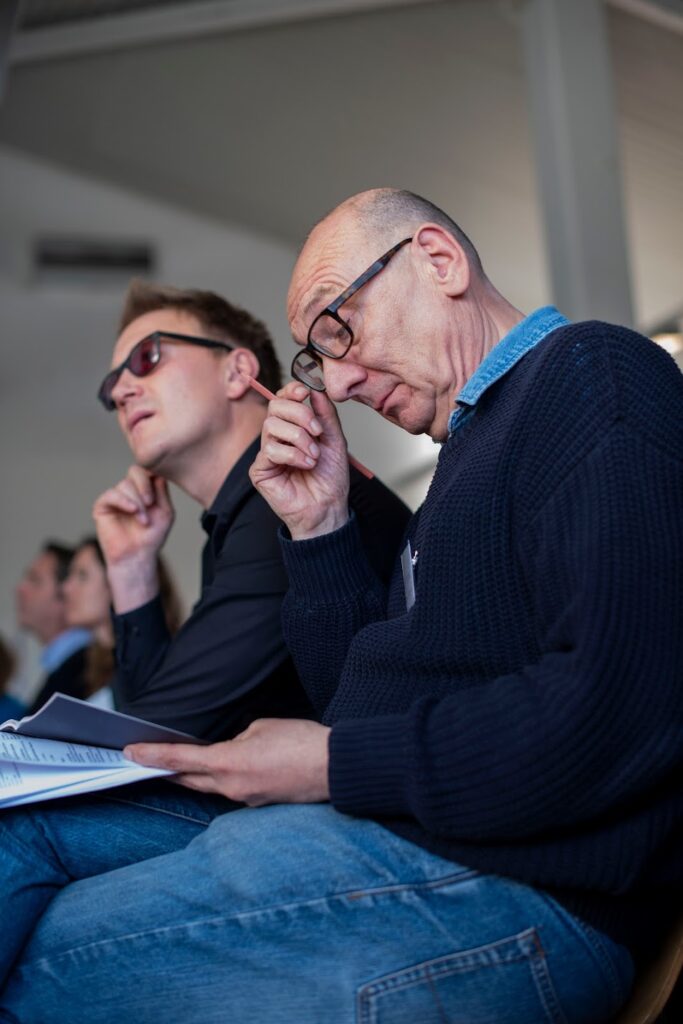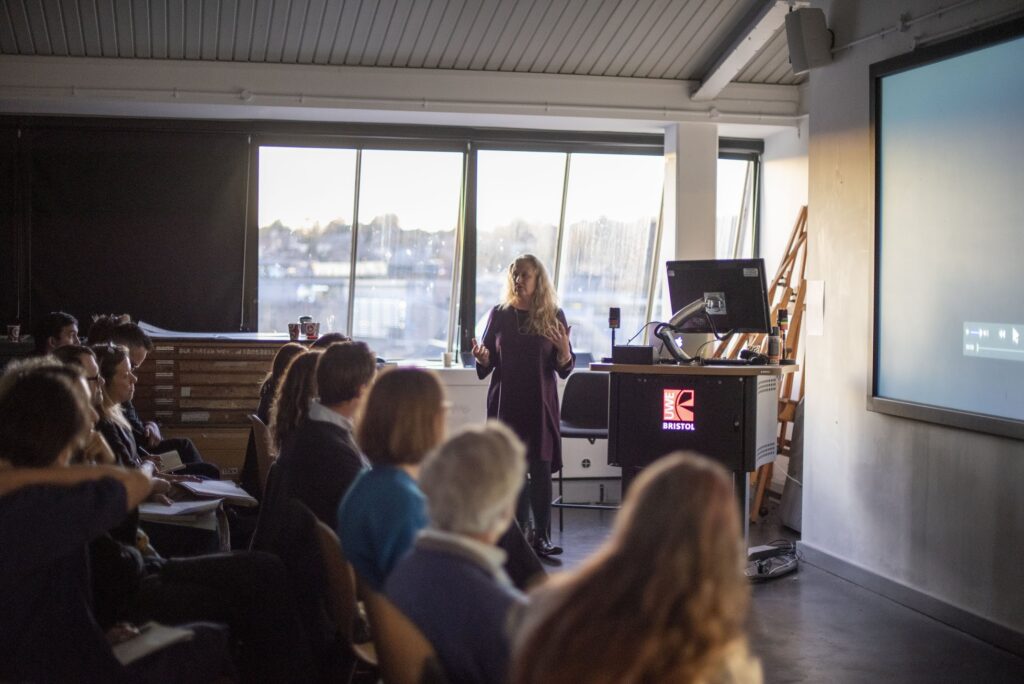Drawing at Art School
Symposium Report – UWE Research
Authors: Lucy Ward, Gary Embury, Anouk Mercier & Chloe Regan
Introduction
In this article we outline and summarise the key themes explored at the UWE Drawing Research Symposium that took place in November 2019 in Bristol, on the subject of Drawing at Art School. The Symposium was convened to bring together artists and educators with an involvement in teaching drawing within art schools in the UK. The aims were to share experiences of the current position and role of drawing teaching, and to present different approaches to the teaching or use of drawing in an art school education.
The Symposium was attended by delegates from across the UK. Themes explored include the accessibility of drawing to students; the democratic nature of drawing and drawing practice; drawing’s role in education within the art school, both as an independent discipline, and as a supporting practice to others; the subversive and radical nature of drawing; the way drawing education can be student-led or student-focussed, or how drawing can allow other subjects to become so; the use of drawing as a challenging practice within other disciplines; and the way that drawing can generate a community of practice amongst students.
The persistence, need and demand for drawing at Art School were recognised by the speakers as well as the continuing relevance of drawing both as independent practice and its role in creative education
Themes
Below we present and reflect on the themes that emerged from the proffered papers and discussions at the Symposium.
The accessibility of drawing was a key theme across the whole of the symposium : The limited means required to make drawings was explored by Kelly Chorpening as an aspect of the persistence of drawing as a medium used by artists in challenging circumstances. Chorpening presented an overview of the practices of a number of artists from outside the usual cache of Western Art School references. Ranging from groups of women to political artists, to those working with specific constraints on freedom, health or opportunity, and with an emphasis on non-Western artists. The accessible nature of drawing to students was also discussed by a number of the speakers in terms of being a route into a range of arts practices. Andrew Hall explored drawing as the ‘entry point’ for many students into the arts, and Tania Kovats gave examples of how drawing is accessible across both different levels of ability and languages, bringing together communities. In this way, drawing is not only accessible because of it’s directness as a process, but also as a cheap way of making work and working through ideas.
Kelly Chorpening discussed that due to the fact that drawing can sit outside of usual conventions, and can be made with limited means (by intent or necessity) it can also comment on those things outside of usual discourse. In this way too drawing can be a radical medium and a radical act.The way that drawing education can be student led or student focussed was described by a number of speakers’ experiences. Simon Packard talked about the role of drawing in bringing students from different areas of a college together, and engaging them to participate in a creative environment. Packard runs the drawing room at SGS College, and described how the practice of drawing, and the space of the drawing room can bring the many interests of students together, from music to performance, design and fashion. The performative aspect of Packard’s drawing room leads students to learn through experience, inspiring drawings made in situ, furthering their understanding of the world around them and far beyond the drawing room. The room, it’s layout, content and programme have been developed by Packard, and led by student interests. Challenging the students has led to student demand for a challenge. A space for learning that works for drawing – a non-academic space. A particularly brave and valuable entity in an art school where criteria and making are at odds.
Garry Barker introduced the audience to his blog about drawing, a teaching aid he uses with his students. Led by discussions he has with students, Barker creates posts expanding on ideas arising in the studio, adding links, context and further reading. In this way he has created a huge archive of writing about drawing spanning techniques, technologies, exhibitions, histories, applications and much more, that can be accessed not only by his students, but by a worldwide audience. The breadth of information recorded on Barker’s blog demonstrates the relevance of drawing to students across art and design disciplines. Accessibility to a blog from across the world highlighted the global perspective on drawing that we benefit from today.
Anouk Mercier underlined the urgency of creating and defining a role for cross-disciplinary drawing teaching at UWE, and the need for a designated space for drawing to meet ever increasing demand. Through consultation with students and academics, the provision of technical teaching in drawing has increased to meet the needs of students keen to increase their skills and knowledge of materials through life drawing, and those of staff seeking particular workshops tailored to courses.
Stefan Gant talked about his role teaching drawing across traditional and digital platforms, how the two work together and how they complement each other. As the student and staff experience of the digital increasingly differs, how do we redefine the liferoom for generation z, and how do we keep up with the digital demands and expectations of students? Gant described his own teaching programme for level 1 students, moving from the hand made to the digital, and finding the active point between physical and digital processes in Fine Art disciplines.
Discussion
The persistence of drawing in art school, as both an independent subject, and as a thread running through all creative subjects, was clear from the day’s presentations.
The power of drawing as a dynamic, adapting and relevant practice. Drawing can exist in the context of historical practices, but is never static, and is therefore always used to push forward with new media, approaches and disciplines, and to find new contexts. Several presentations explored the way technology allows us access to global communities of artists and designers, which is influencing and broadening the role of drawing increasingly quickly.
Demand continues, both for the ‘traditional’ skills, methods and practices, but also for the more subversive and radical aspects of drawing. Sometimes it is precisely because drawing has this ‘traditional’ reputation, that it can be used to subvert and change perspectives.
The benefits of and need for a community of practice, not only amongst learners as outlined by Tania Kovats, but also amongst educators, researchers and artists, was also highlighted by many of the speakers.
Conclusions
The many polarities of the teaching of drawing were evident throughout the papers and discussions at the Symposium: drawing is under threat but also very desired; a Fine Art practice, but present in many other disciplines; a traditional practice but also at the cutting edge, a formal observational and analytical tool, and at the same time very accessible and informal. These opposing and layered definitions of drawing present challenges in terms of defining what an education in drawing at art school is, and what its benefits may be.
Further research into the historical progress of the teaching of drawing could be enlightening in this respect. It could be said that the Coldstream Report was the catalyst responsible for blowing apart the identity of drawing within education, with the teaching of drawing moving broadly from a fairly conventional formal activity to a multi-fasceted practice. A closer analysis of that progress within different institutions would be useful. Recent events and publications have contributed to this research, such as the exhibition and conference in Jan/Feb 2018 at Camberwell UAL, A History of Drawing (Chorpening 2018), and the publication, The London Art Schools (Llewellyn, 2015).
The Symposium has shown that there are many different ways that drawing can be taught, and many different aspects of drawing that students can learn about. There are many different contexts in which drawing can be used as a teaching tool, and many different learning outcomes which can be facilitated by drawing.
Further research along these lines, investigating ways of teaching drawing, as well as the role and benefits of drawing within the curriculum would be of benefit.
Endnotes:
This symposium is the second event devised by UWE Drawing Research, following an exhibition in September 2019, Drawing Review, representing and reviewing the diversity of staff’s drawing practice across the Schools of Art and Design, and Film and Journalism at UWE After reflecting on the place of drawing within the Schools’ tutors’ artistic practices, we wanted to assess our teaching ideologies and practices, and to embark on a national collaboration, inviting others to share theirs.
Audio recordings of the symposium presentations can be found at http://www.uwedrawingresearch.com
References
Chorpening, K. (2018) ‘A History of Drawing’, Camberwell College of Art, London, February 2018
Farthing, S. (2006) Plan du Dessin (online). Available at: http://stephenfarthing.co.uk/wordpress/wp-content/uploads/2016/03/map.pdf(accessed 2 May 2020).
Llewellyn, N. (2015) The London Art Schools. London: Tate
Speakers at the Symposium were: Andrew Hall, Platform Leader, Narrative & Voice, Graphic Communication Design, Central Saint Martins, University of the Arts London; Chloe Regan, Senior Lecturer in Art and Design, Integrated Foundation, UWE; Paul Fieldsend Danks, Associate Professor and Academic Dean, Plymouth College of Art; Howard Riley; Professor Emeritus, Swansea College of Art; Tania Kovats, Professor of Drawing Bath Spa and ex- MA Drawing prog leader at Wimbledon; Anouk Mercier, Lead Technical Instructor, Drawing, UWE; Kelly Chorpening, Programme Director Fine Art: Painting, Drawing and Printmaking, Camberwell College of Arts; Garry Barker,Lecturer, Fine Art, Leeds Arts University; Stefan Gant, Senior Lecturer in Drawing and Digital Practice, University of Northampton; Simon Packard, Drawing Room Co-ordinator at SGS College Stroud and PhD candidate, Bath Spa University; Lucy Algar, Course Leader, BA Theatre Design, Wimbledon College of Art; and Sophia Banou, Lecturer, Architecture, UWE.
DRAWING RESEARCH NETWORK
hosted by TRACEY at Loughborough University
